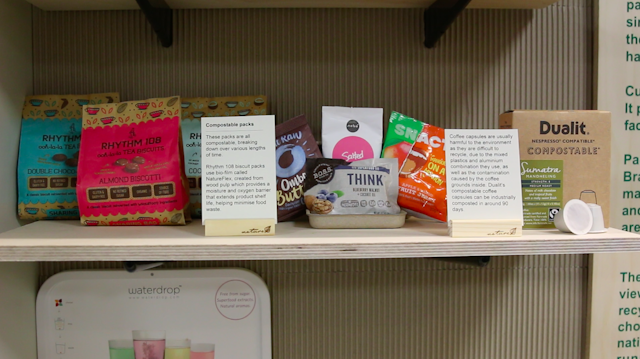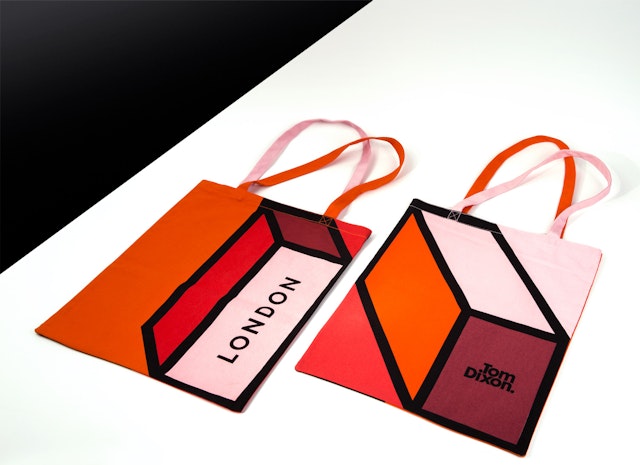
Advertisement

Is the drastic jettisoning of PET plastic the best route for brands to take?
Consumer outcry surrounding the global overuse of plastics has caused multitudes of FMCG, retail and food companies to rapidly readdress their packaging strategies. But is the drastic jettisoning of PET plastic really the best route for brands to take?
If David Attenborough is the prophet of the anti-plastic generation, Chris Griffin is the pragmatist. As multinationals from Evian to Adidas scramble to reduce the amount of plastic in their supply chains in response to consumer outcry, the chief executive of the Museum of Brands, Packaging and Advertising is quietly cynical with regards to brands’ efforts.
“From the consumer’s point of view, the plastic debate is so complex that I don’t think they can engage in anything other than the top line soundbite,” he says. “The consumer is going to be fed many lines – like ‘we’re going to make all our new bottles out of sugar cane’ or something. That’s probably not going to happen worldwide on the scale of a global brand.”
The reason, Griffin believes, is because product lifecycles are complicated. Designers spend years understanding the end-to-end process of packaging – from conception to burial in either landfill or recycling plant – and therefore the choice of whether or not to use plastic should not be one made by a PR department.

“Brands have to be very careful not to respond too quickly to media pressure,” he says. “If they say ... ‘We’re going to go for all sugar cane-based packaging’, that’s going to be dangerous for them because they won’t be able to deliver it.
“What might work as a comment this year, could get them in trouble next year.”
Yet there’s no doubt the pressure on brands to do something about the amount of plastic they produce is enormous. Last month saw a brigade of passionate, if not militant, protestors launch a ‘plastic attack’ on a Tesco store in Bath (they ripped off wrapping and left it dumped at the tills), 'reduce plastic waste' brings up 38m+ results on Google and online vitriol spun towards Whole Foods over selling orange segments in plastic boxes caused the retailer to pull the product almost instantly.
Since David Attenborough urged humanity to halt plastic use in order to save ocean ecosystems in Blue Planet II, the list of brands promising to reduce or jettison plastic from their packaging has extended exponentially. Commercial pressure has given plastic a bad name – but that’s not entirely a good thing, argues Griffin. Plastics, after all, evolved with and as part of the notion of the 20th century brand.
“Plastics do some incredible things: preserving by using the absolute minimal amount of material,” he explains. “The moldability, the formability ... you can get shape and character, you can get brand attributes into your packs.”

Griffin's appreciation for the material is slightly ironic considering his museum has launched an exhibition dedicated to sustainable and, largely, plastic-free packaging. Yet his favourite exhibit is of two cucumbers, one wrapped in plastic and one naked: while the green skin of the cucumber is cited by many anti-packaging activists as natural packaging, it’s the unwrapped fruit that goes mouldy first.
“The energy that goes into food production is phenomenal,” Griffin says. “And if we don’t get it from the field to the plate because it’s wasted [because of a lack of packaging], that’s a huge waste of energy.”
A similar argument was made by The Genuine Coconut Company when it was lambasted for wrapping its coconuts in film; its retort was the packaging helps the milk stay fresh for longer, and plastic is fully recyclable. Additionally, disability campaigners have defended the accessibility of pre-chopped and wrapped vegetables, which have also been much maligned since the Blue Planet II episode aired.
A food industry without plastic may then be unobtainable – or even undesirable, at least for the time being. But as countries such as the UK continue to wait for a comprehensive national recycling system, it’s brands that are leading the charge in researching sustainable solutions. Unilever announced last week (4 April), for example, that it’s collaborating with Dutch startup Ioniqa, which has developed a technology to break down PET plastic to a molecular level.
“That means we can take any type of PET waste, then break it down to remove colour and impurities,” said Sanjeev Das, the conglomerate’s global packaging director, in a statement. “We can then turn it back into pure, clean, transparent PET plastic that’s food-grade ready.”
Coca-Cola has promised to help collect and recycle a bottle or can for every container that it sells by 2030, alongside aiming to manufacture plastic containers with 50% recycled content by the same date. On a smaller scale, rival P&G is working with the recycling company Terracycle to manufacture Head & Shoulders bottles made partially of plastic washed up on beaches and waterways.
Interestingly, Terracycle has found gaining support from big multinationals, such as P&G, to have been easier than garnering it from the NGOs it relies on to collect the beach plastic.
“P&G wanted to do something sustainable, something to make a difference,” explains Stephen Clarke, head of communications at Terracycle Europe. “And although there’s quite a lot of work to get buy in from various departments from within a company, our biggest problem was actually getting the NGOs to buy into it. It’s getting them to do something different.”

While the FMCG multinationals (which have budget and scale on their side) lead on recycling innovation, Griffin sees potential in the luxury sector when it comes to the development of sustainable plastic alternatives.
“As a designer, some sustainable materials are just fabulous to work with,” he says. “Corrugated cardboard looks beautiful, materials come from crustaceans have fabulous textures and some [materials] that come from various plant materials are wonderful to work with and wonderful to design with. But they’re not on the scale that will be economical for volume. So I think luxury’s a whole new area where sustainable thinking is necessary.”
The potential for luxury, sustainable packaging to double as a proof point for the wider industry is a sentiment shared by a number of design houses.
“As with any aspirational market, the luxury packaging sector is a platform for materials and innovations to be revealed and translated into other areas,” says Toby Wilson, chief operating officer at MW Luxury Packaging. “Naturally, the more a new technology, technique or material is used, the more accessible it becomes.”
However Wilson is cognisant that the luxury sector has, thus far, been immune to the pressures of sustainable packaging due to the assumed long lifespan of its products. A consumer is more likely to keep and reuse a beautiful Fortnum & Mason chocolate box, for instance, than a Milk Tray.
“But this is changing,” he says. “Quality and brand aspiration is critical and therefore innovation in high quality and high-performance materials is essential. Materials that perform and present need to be developed to maintain the luxury credibility that a brand demands.
“This will come through innovation and material development.”

The current trend for minimalism (little to no branding on packaging) in the luxury sector has also meant for easier experimentation with avant-garde, sustainable materials, says Victoria Walmsley, media developer at Progress Packaging. The agency has been working with recycled cottons, canvas and hessian, as well as corrugated board and recycled boards.
“There is definitely a strong wave of encouragement [for more sustainable materials] that comes from designers, manufacturers, and the consumers, too,” she says. “We do see more enquiries asking us how they can make things pretty but also reusable. I think reusability once a product has been opened is the key requirement. The market doesn’t just want to provide bags and boxes that will get used once and then thrown away anymore.”
Yet environmental charities, quite understandably, aren’t ready to rest the future of the world’s oceans on the luxury sector’s ability to innovate alternatives to plastic. For Julian Kirby, lead plastic-free campaigner at Friends of the Earth, the onus is on a number of actors to make change.
“Currently the companies that make and market packaging only contribute about 10% of the costs of collecting and processing it, meaning the remaining 90% is borne by tax payers through cash-strapped local authorities,” he says. “A mix of sectors working together could rapidly provide answers we need to the plastic pollution crisis, with big companies having the power to make alternatives to plastic the mainstream choice.
“However, for this change to come about on a mass corporate scale we need central government action.”